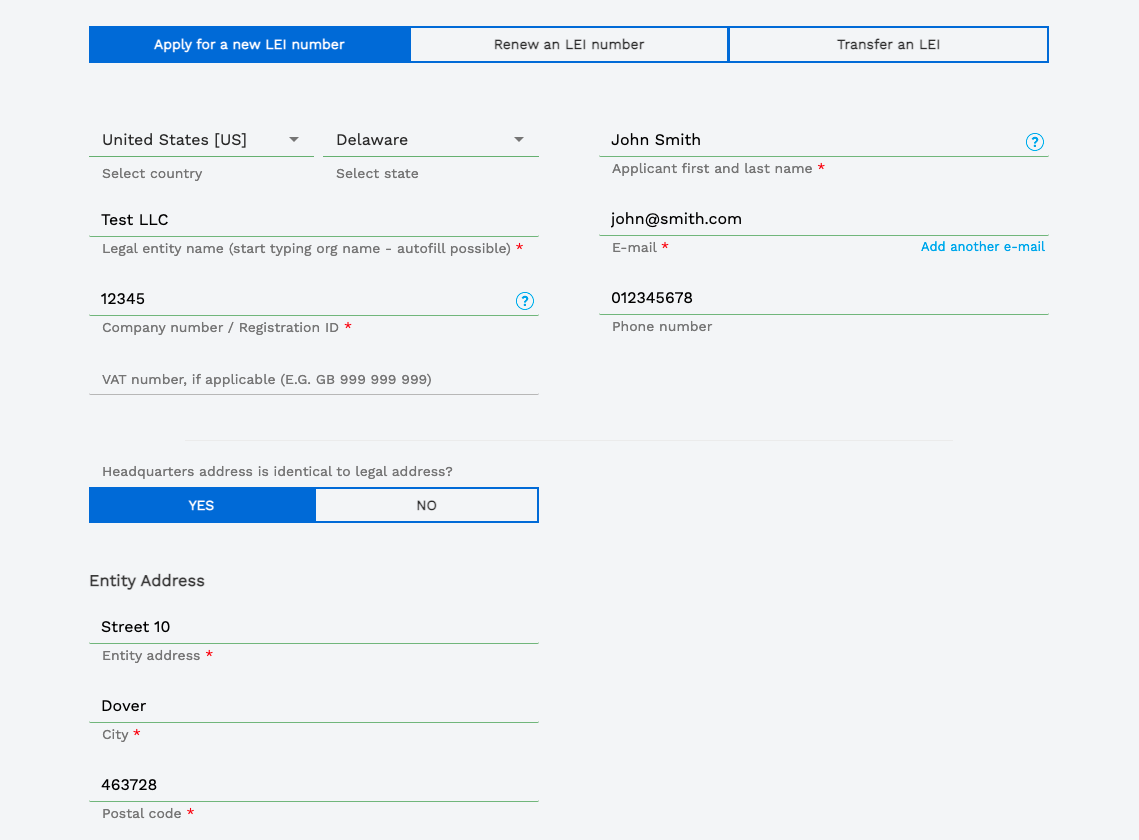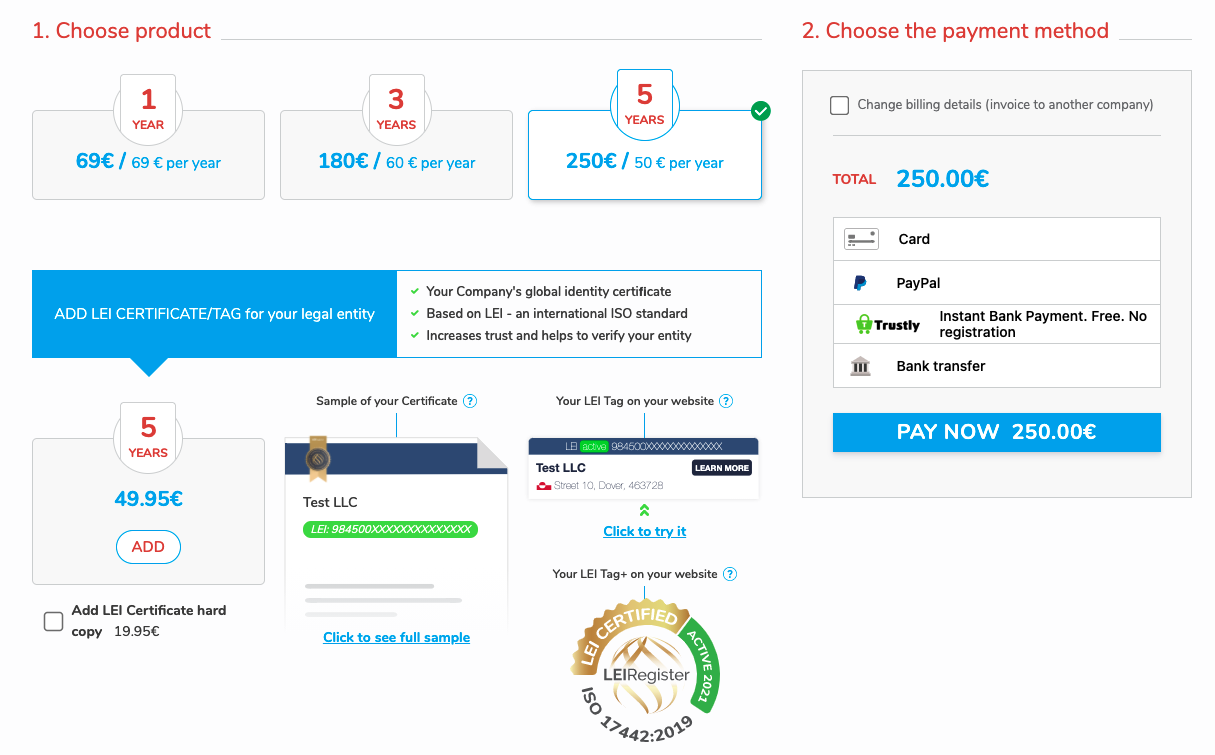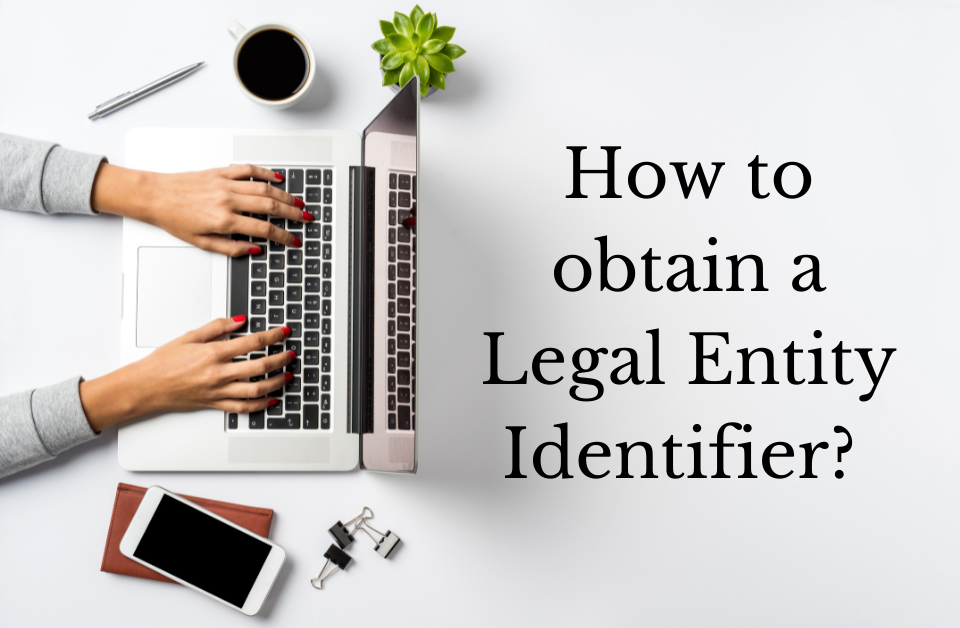How to obtain a legal entity identifier?
The Legal Entity Identifier (LEI) is a unique alphanumeric code, based on the ISO 17442 standard. It is globally used for the identification of legal entities participating in the financial market. All LEI codes can be found in the Global LEI Database, which is managed by the Global Legal Entity Identifier Foundation (GLEIF). The database is open and publicly accessible, therefore guaranteeing transparency between the different parties involved in financial transactions. The LEI system was developed after the financial crisis of 2008 and its aim is to increase transparency in the global marketplace.
The LEI data, which is publicly available, contains information about the entity name, legal jurisdiction, addresses, status and registration authority. This data is referred to as Level 1 data. Information regarding corporate structures, i.e. parental relationships between entities is Level 2 data.
Every legal entity is eligible to apply for an LEI Number. There are a couple of steps to the process, which are explained in detail below.
Choose a LEI Service Provider
LEI codes are issued by Local Operating Units (LOU’s) that are accredited by GLEIF. Besides LOU’s there are numerous Registration Agents on the market that form a link between the end customer and the LOU. Registration agents provide the customers with all the information about obtaining Legal Entity Identifiers, as well as provide registration and renewal services and take care of the communication with the LOU.
Since LEI codes are standardised and it is neither impossible to differentiate an LEI based on the issuing LOU, nor is it necessary to use an LEI issuer in their own country, the customer is free to choose any service provider they wish.
Registration Agents are free to set their own pricing strategy, which is why there can be various rates for LEIs seen on the market. Many service providers offer additional services, like fast-tracking, automatic renewals, multi-year packages or certificates.
Therefore, choosing a service provider might require a bit of research, before a suitable solution in terms of rates and additional services can be found.
Fill in the application form
In order to apply for a Legal Entity Identifier, an LEI registration form must be completed. The country of registration, company ID and the entity legal name must be provided, as well as the applicant name, email address and phone number. The applicant contact details will not be published with the LEI data, but are used by the registration agent for contact purposes.
Some application forms offer an entity data auto-fill function, which makes it very simple to fill in the application. If the entity is registered in the official business registry, the application form will pull the entity data directly from the registry and it is up to the customer just to double check that the information is correct.

After filling in the Level 1 data, there is also an opportunity to report Level 2 data – the parental structure. In case the entity is owned by another (>50%) and the parent company consolidates the annual financial statements, the information can be reported and published with the LEI data. There are exceptional cases where the data should not or can not be reported. The application form will provide a list of exception reasons and an applicable one can be chosen.
Choose the registration period
LEI codes are always valid for one year, after which they need to be renewed. This is to guarantee the LEI data accuracy – the entity data is reviewed annually and changes made, if necessary.
Many service providers offer the opportunity to register the LEI for multiple years. Usually this means that the responsibility to renew the LEI code shifts from the customer to the Registration Agent. This is a great solution for those who know they will need their LEI for many years to come – multi-year registrations are usually more cost-effective and they also eliminate the need to remember that the LEI requires renewing annually.

Complete the payment
In order for the Registration Agent to work on the application, the payment must be completed as well. LEI Lookup offers the possibility to pay by credit card, PayPal, Trustly or bank transfer.

Data validation
For entities that are registered in the official business registry of their jurisdiction, the data validation process can be fairly quick. The information that is provided in the application is validated against the data in the registry and if there are no discrepancies, the LEI is issued. This can sometimes be done in 15 minutes, however usually takes a couple of hours.
Entities that are not listed in any registries, like Trusts or Funds, the process takes a little more time. The registration agent usually asks for a document from the customer, from where the entity data can be validated. Suitable documents include (but are not limited to) Trust Deed, Certificate of Incumbency or Incorporation. For these types of entities, the validation process can take up to 24 hours.
LEI Is issued!
After the data validation process is complete, the LEI code is issued and sent to the customer via the provided email address. The LEI is also published to the GLEIF database. The database is updated daily, approximately every 6 hours, therefore it can still take a little more time before the LEI code and the associated data is visible in the global database. After the LEI code is listed in GLEIF, it can be provided to any financial authority that needs it!

